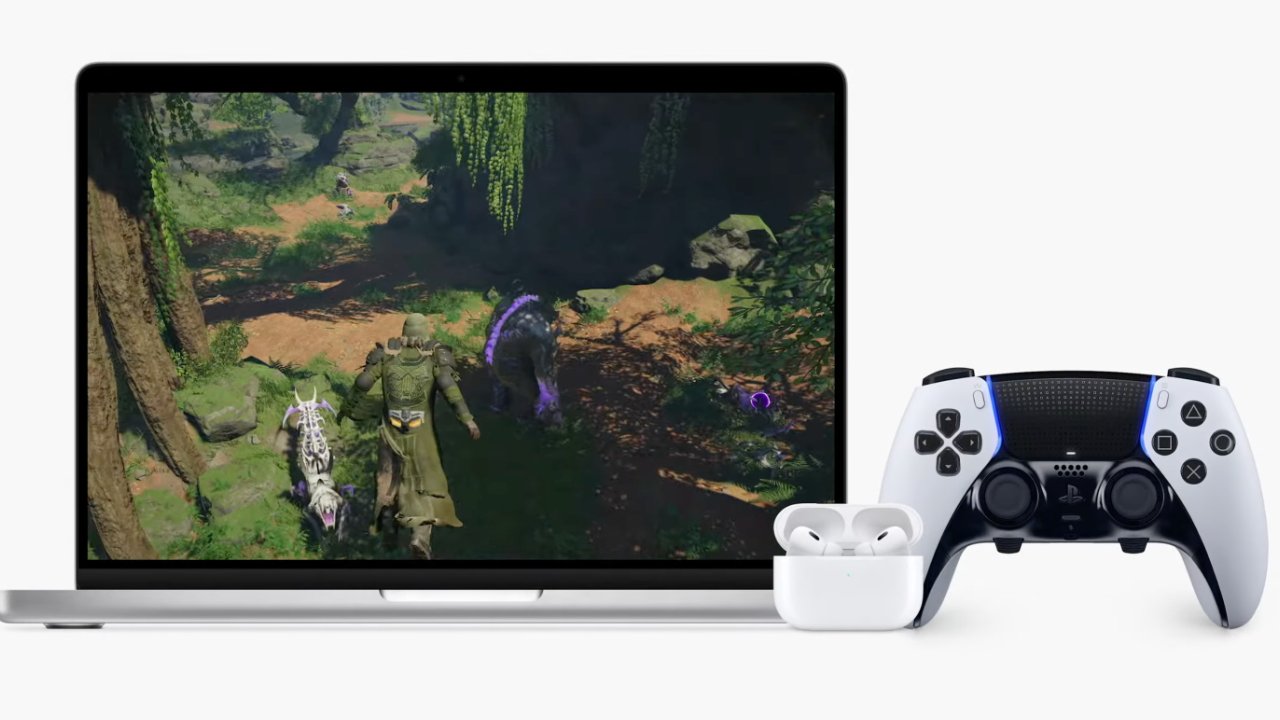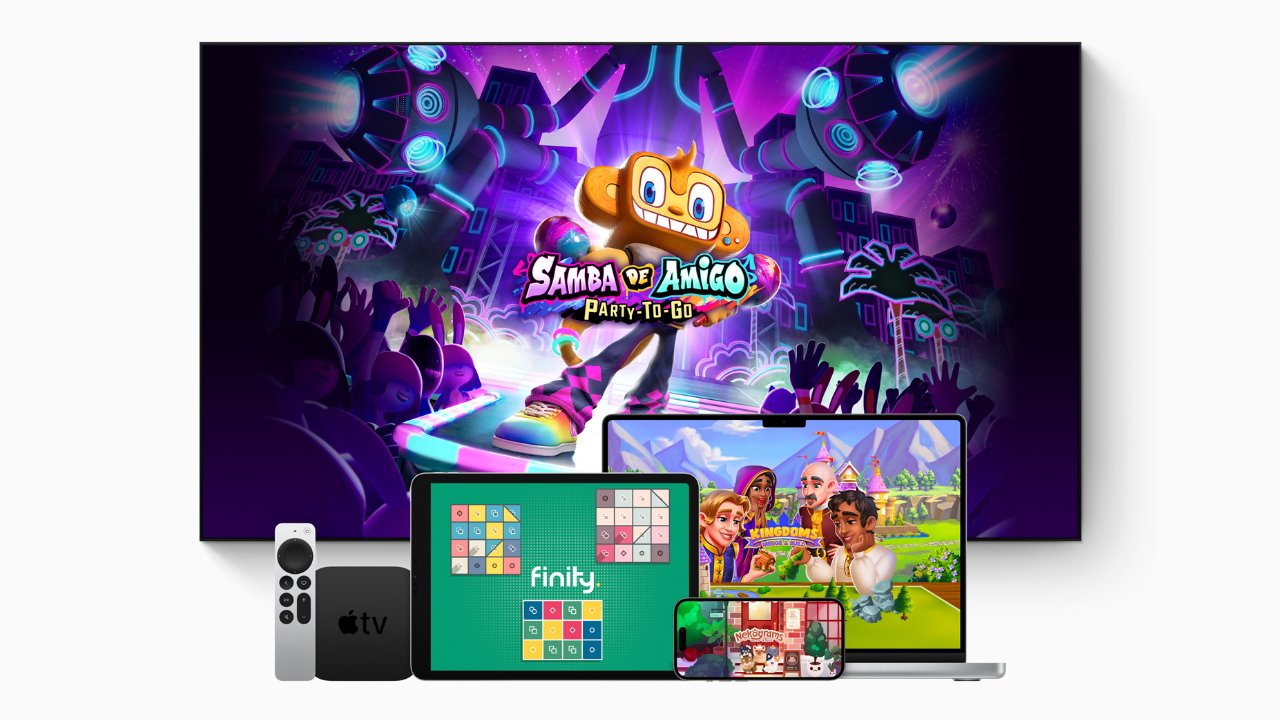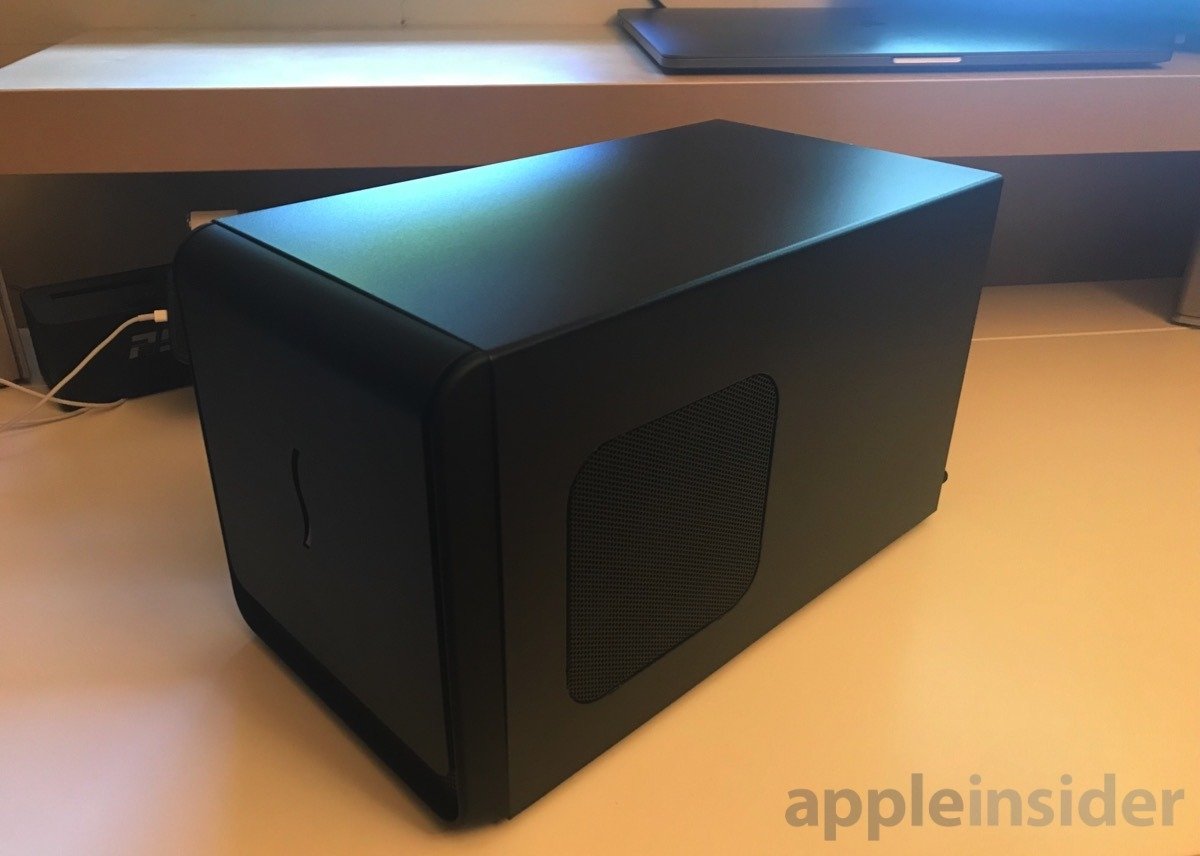Apple is bringing Game Mode and a porting toolkit to macOS Sonoma. It's a good start, but Apple needs to do far more to attract gamers and game makers to the Mac.
Apple Arcade is, in theory, a great concept — Pay one low monthly fee and have unlimited access to a stable of games across a variety of genres, unencumbered with any sort of in-app purchases. And in theory, they're all playable across Apple TV and the Mac.
Unfortunately, Apple Arcade hasn't quite lived up to the ideal.
Right now, Apple Arcade is heavy with mobile games along with a smattering of original titles that play on the Mac. Many of the games available through Apple Arcade don't work on the Mac.
And those that do must, by necessity, support other Apple devices.
This forced scalability means that Apple Arcade games which work on the Mac aren't necessarily optimized for the Mac. Most of the fare you find in Apple Arcade sports interfaces and controls that were designed for touch input, which immediate creates some UI cognitive dissonance on the Mac. Graphics and textures in Apple Arcade games often scale poorly from mobile to desktop or laptop screens.
Apple needs to offer a more compelling experience for Mac gamers on Arcade. Like in days of yore, there should be Mac-exclusive titles like Marathon was originally, or like Halo was going to be, or titles that really show off what macOS can do.
Not just games that you can play on any Apple device.
Foster original Mac game development
Apple could and should bring game development in-house to see what can really cook when the developer isn't worried about making Apple code work well enough compared to other platforms, but better. I've been banging this drum for years, but I think it's imperative these days.
Apple now controls its own silicon and the software that runs on it. It's in a unique position to be able to showcase its own technology.
But Apple eschews the first-party development studio model favored by much of the rest of the industry: wholly-owned subsidiaries who make games specifically for their hardware. Sony, Microsoft, and Nintendo are no strangers to eating their own dog food, as the saying goes.
The risk is that Apple invests in a group that fails to return a profit. But the reward is the ability to evolve the Mac from also-ran to superior — to spotlight unique user experiences you won't find on other platforms.
Stop showcasing old games
Apple certainly works with third-party developers and game publishers where it's appropriate. The company even showcases their efforts during publicity events like the WWDC keynote. Even then, however, the Mac comes across as an also-ran.
Take 2022's WWDC, which featured a Mac version of No Man's Sky, Hello Games' action-survival game which has been out since July 2018, and the Mac version finally came out around the same time as WWDC 2023. Resident Evil Village came out for the Mac in October of 2022, almost a year and a half after its debut.
This WWDC saw Apple spotlight Death Stranding: Director's Cut, a special edition of Hideo Kojima's open world action game — which has been out since 2019.
Apple says that Mac versions of these games are possible thanks to advances in Metal 3, its graphics API. But showcasing four or five year old games as exemplars of what Mac hardware can do isn't going to get anyone very interested in playing or developing Mac games.
In fact, it's insulting to game players.
Apple should get out in front of this with compelling, original content. And if it's not willing to bootstrap its own first-party game development studio, I'd like to see Apple convince more game makers to really flex the technology to see what they can do in more meaningful ways than just porting existing titles to the Mac platform.
Keep making the process easier
Game Porting Toolkit gives game devs a leg up on the work of Mac game conversion by making it possible to test games before porting them. Its announcement was buoyed by reports from gamers who have used the toolkit to play Windows games on their Macs; a curiosity for the technically inclined, but of little practical use since games can't be distributed this way.
But the news about the toolkit may have overshadowed more important efforts and improvements Apple is making to simplify the Mac to Windows game pipeline.
Metal shader converter, for example, helps devs convert shaders and graphics code to run natively on the Mac, while MetalFX upscaling can help games improve frame rates while maintaining high levels of visual fidelity. Offline shader compilation is another trick that Apple's rolled out that promises smoother gameplay and faster game and level load times.
There's a lot more that Apple needs to do here.
These new tools provide Metal with features similar to those Nvidia created through its Deep Learning Super Sampling (DLSS) tech, which dramatically improve game framerates using interpolation and other techniques. But DLSS has made hardware-based realtime ray tracing possible for newer PC games running on Nvidia's RTX GPUs, and that tech is missing from the Mac.
It's laudable for Apple to add more game tech to macOS and I want to see it continue. But let's be realistic: even if all the improvements Apple's making to game technology on the Mac were available today, it wouldn't change things for the vast majority of users, just folks with M-series Macs and Sonoma, which isn't out yet.
So these efforts are squarely foundation-building, not world-changing.
Open the Mac (again)
I doubt Apple will ever give Mac gamers a truly modular system that can accommodate upgradable components like new, mass-market consumer GPU cards, but we got close with Intel Macs. For a while, external GPUs connected through Thunderbolt interfaces provided even the modest Mac mini with a lot of extra graphics oomph.
While we were big fans, eGPUs weren't a solution for everyone, adding expense, bulk and complexity. They often needed some tweaking to work right, but they provided an option to gamers and graphics pros that needed a different solution than the GPU Apple included in their gear, with sometimes astonishing results.
Unfortunately, eGPUs went out the window with the switch to Apple Silicon. Apple's excuse is that its M series chips use a unified memory architecture that doesn't support eGPUs.
It's beyond just no support. At present, even if AMD went rogue and wrote a driver for the card, there's no way to implement it.
If an interview with Daring Fireball earlier this year is any indication, this will not change any time soon. Apple's head of hardware engineering John Ternus said, "it's not entirely clear to me how you'd bring in another GPU and do so in a way that is optimized for our systems."
I understand why Apple says it needs to keep this closed approach but it still doesn't sit well with me, and I don't believe the technical issues around this are insurmountable. Regardless, I know that for as long as Macs remain closed off from any sort of modular expandability — beside the increasingly niche Mac Pro — Mac appeal to gamers will remain limited.
Sustain the momentum
Apple's business goals sometimes come into direct conflict with the game market. Ask any gamer who watched big chunks of their Mac-compatible Steam games library go away after Apple's transition to 64-bit in Catalina, for example.
That's one fairly recent example. But Apple's history is dotted with similar examples going back decades. Apple isn't afraid to create some short-term discomfort for developers and users if it suits the company's long-term goals.
Getting gamers interested in the Mac again is one thing, and Apple is making a good attempt here. Keeping game devs and publishers interested in Macs is a different story.
Hopefully Apple can keep this new momentum going, but Macs have sold in record numbers for years and it's barely moved the needle on game sales.
And even with those record sales, there are more than 10 Windows machines to one Mac, and even in that one per 10, it isn't a majority on Apple Silicon.
With Apple's priorities shifting from season to season depending on management regime and business goals, sustaining any gaming momentum requires a sea change inside of Apple that I don't see any signs of.
Decades ago, DirectX started as a skunkworks project inside of Microsoft, to help build the appeal of Windows 95 to game developers, many of whom still eschewed Windows support in favor of DOS. It took a while, but eventually Microsoft realized that DirectX was a crown jewel.
Today, supporting DirectX and game technology is a core objective throughout Microsoft's business. I've witnessed enough honest attempts from within Apple to improve the landscape for gamers and game developers which end up aborted or deprecated and forgotten that I'm skeptical these recent advances will be any different.
I'd love to see evidence that Apple thinks of game technology as a core discipline, but we're not there yet.
In the interim, I'll keep playing games on the Mac when it makes sense. But that's why most of us at AppleInsider also keep around a PC, running Windows and equipped with a PCI-E GPU. Gaming on that device is just fundamentally a better user experience than on my Mac. I, like so many others, want that to change.
 Peter Cohen
Peter Cohen











-m.jpg)






 Marko Zivkovic
Marko Zivkovic
 Christine McKee
Christine McKee
 Andrew Orr
Andrew Orr
 Andrew O'Hara
Andrew O'Hara
 William Gallagher
William Gallagher

 Mike Wuerthele
Mike Wuerthele
 Bon Adamson
Bon Adamson




-m.jpg)



32 Comments
I'm not a gamer, but at the same time, it would be difficult to portray anything other than casual gaming on the Mac as a financial benefit to Apple.
Shorter version of your post;
Apple's hardware philosophy, built around energy, packaging, and production efficiencies, is antithetical to the gaming world, which is rich with customizations built around maximizing TDP. That Apple can barely deliver a marginally configurable Mac Pro is telling, and is indication enough that Apple will not deliver hardware specifically for gamers.
All that said, Apple's hardware is no slouch, and game developers could certainly deliver native games to the Mac, but even then, M series marketshare today, after barely two years into the transition, would be minuscule against the PC market, a financial risk for developers.
Well put. Quality bloviation, thank you.
While it would still need to be accompanied by the commitments and efforts you mention, there is a way to answer the question posed by Ternus. He’s right that there’s no optimal way to integrate AMD’s current PCIe GPU architecture, for example. Plus, I don’t think he only means unified memory. It’s also about TBDR (tile-based deferred rendering) and Apple’s approach to GPU architecture.
https://developer.apple.com/documentation/metal/tailor_your_apps_for_apple_gpus_and_tile-based_deferred_rendering
Nonetheless, it could still be done, by creating PCIe components that use this approach. Imagination Technologies is one company that could do this, not to mention Apple itself. PCIe 5 and Thunderbolt 5 make this practical.
Apple has succeeded almost beyond belief by focusing on core competencies, avoiding "shiny object" distractions, and leveraging what they do best for maximum profits. And that's what they should continue doing. Apple has never been the dominant player in the gaming arena, and I don't see any benefit for Apple to jump into the chaos in that sector.
(Shrugs) Nintendo seems to do just fine with their hardware choices. It’s a lack of commitment from devs and studios, not a lack hardware that’s bleeding edge.
Also, “old” games, really? You mean the ones people are still playing, buying, and otherwise spending money on, even years later? Oh, I am so insulted.
I don’t think the majority of the macOS market cares about gaming on that platform. On iOS and iPadOS … and potentially VisionOS, definitely. Most of us just don’t sit at our Macs (which we use for work all day) to game. We sit down at our large screen TVs, Atmos (or other) sound systems, and play on our console(s) cradled by our comfy couches and chairs.
Also, notably, the console community is relatively free of the endemic cheating the PC side nurtures. Let’s face it, the Mac market of gamers does not want to deal with the toxicity of the PC game market. They just opt out.
https://www.pcgamer.com/on-behalf-of-pc-gaming-sorry-about-all-those-cheaters-in-your-console-games/